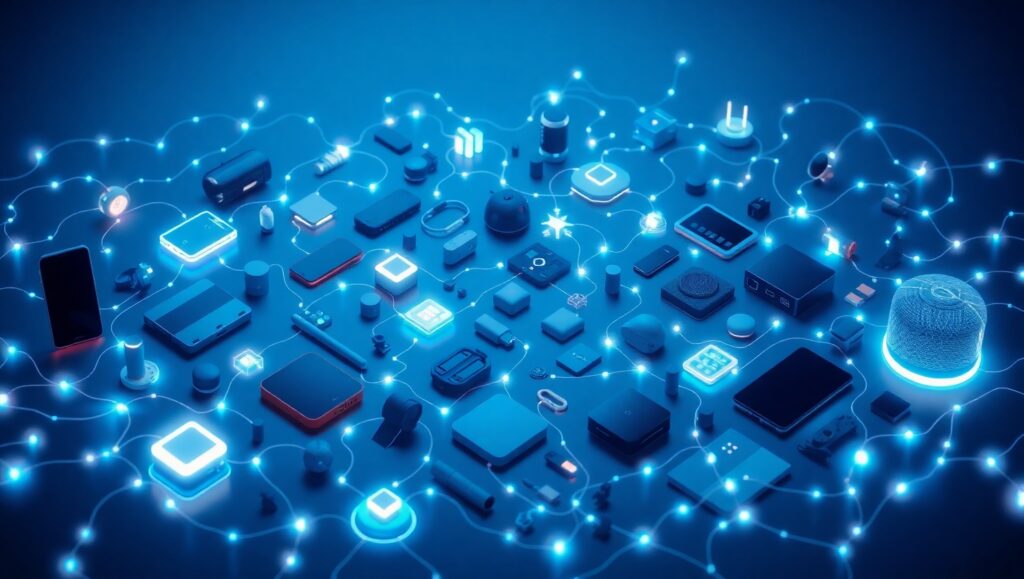As the world begins to unlock the full potential of 5G, the horizon future of 6G technology is already taking shape. Expected to roll out by 2030, 6G promises to deliver unprecedented connectivity speeds, transformative applications, and global innovation across industries. This blog delves into the future of 6G, exploring its potential impact, use cases, and the challenges of global implementation.
What is 6G Technology?

6G, the sixth generation of wireless technology, is poised to surpass 5G by offering ultra-high speeds, near-zero latency, and seamless connectivity across devices. Early research indicates that the future of 6G technology networks could achieve speeds up to 1 Tbps, a hundred times faster than the peak speeds of 5G. Beyond speed, 6G aims to integrate advanced technologies like artificial intelligence (AI), edge computing, and the Internet of Everything (IoE) to create a fully interconnected world.
Key Features of 6G Technology
- Unprecedented Speed: Speeds reaching 1 Tbps will enable instantaneous data transfer for complex applications.
- Ultra-Low Latency: Latency of less than 1 millisecond will enable real-time interactions across industries.
- Enhanced Spectrum Efficiency: Improved use of the radio spectrum will allow more devices to connect simultaneously.
- AI Integration: AI-driven network optimization will ensure smarter, self-healing networks.
- Global Coverage: Advanced satellite systems will provide connectivity to even the most remote areas.
Applications of 6G Across Industries
1. Autonomous Vehicles
6G will be a game-changer for autonomous vehicles by enabling real-time communication between vehicles, infrastructure, and pedestrians. With ultra-low latency, cars will make split-second decisions, improving safety and efficiency on the roads.
2. Internet of Things (IoT)
The IoT ecosystem will expand exponentially with 6G, supporting billions of interconnected devices. Applications range from smart homes and wearables to industrial automation and precision agriculture.
3. Smart Cities
6G will enable truly smart cities by powering interconnected systems for traffic management, energy distribution, and public safety. AI-powered analytics will process data from millions of sensors to optimize urban living conditions.
4. Healthcare
Telemedicine and remote surgeries will reach new heights with 6G. High-speed networks will support real-time transmission of high-resolution imaging and enable advanced medical robotics.
5. Immersive Experiences
6G will revolutionize entertainment and education with AR/VR experiences that are indistinguishable from reality. Virtual meetings, online classes, and gaming will feel more immersive than ever before.
Impact on Developed and Developing Countries
Developed Countries

In developed nations, 6G will accelerate advancements in AI, robotics, and quantum computing. Industries like finance, healthcare, and entertainment will leverage 6G to provide cutting-edge services.
Developing Countries
For developing countries, 6G represents an opportunity to bridge the digital divide. Enhanced connectivity can support education, healthcare, and economic growth, particularly in rural and underserved areas. However, infrastructure development and affordability will be key challenges.
Real-World Use Cases

- Autonomous Delivery Systems: Drones and robots powered by 6G will enable faster and more reliable delivery services.
- Precision Agriculture: 6G-enabled sensors will monitor soil conditions, crop health, and weather patterns, boosting agricultural productivity.
- Disaster Response: Real-time data from sensors and AI systems will enhance emergency response capabilities during natural disasters.
Challenges in Implementing 6G
- Infrastructure Costs: Building 6G networks will require massive investments in hardware, software, and a skilled workforce.
- Regulatory Issues: Global standards and spectrum allocation need to be established to ensure seamless adoption.
- Energy Consumption: Operating ultra-fast networks will demand energy-efficient solutions to minimize environmental impact.
- Security Concerns: Increased connectivity comes with the risk of cyberattacks and data breaches, so robust security measures will be essential.
- Digital Divide: Ensuring equitable access to 6G technology in developing regions will require international collaboration and funding.
Conclusion
6G technology is set to revolutionize connectivity by 2030, bringing transformative changes across industries and societies. From autonomous vehicles and IoT to smart cities and healthcare, the possibilities are endless. However, realizing the potential of 6G will require addressing significant challenges, including infrastructure costs, regulatory hurdles, and the digital divide. By preparing now, we can ensure that 6G becomes a driving force for innovation and inclusion worldwide.
FAQs
1. When will 6G be available? 6G is expected to roll out commercially by 2030, with initial trials starting earlier.
2. How fast will 6G be? 6G networks could achieve speeds up to 1 Tbps, making them a hundred times faster than 5G.
3. Will 6G replace Wi-Fi? While 6G may reduce the need for traditional Wi-Fi in many scenarios, both technologies are likely to coexist.
4. What industries will benefit the most from 6G? Industries like automotive, healthcare, education, and entertainment will benefit significantly.
5. What are the biggest challenges of 6G? High infrastructure costs, regulatory issues, energy consumption, and ensuring equitable access are among the top challenges.


